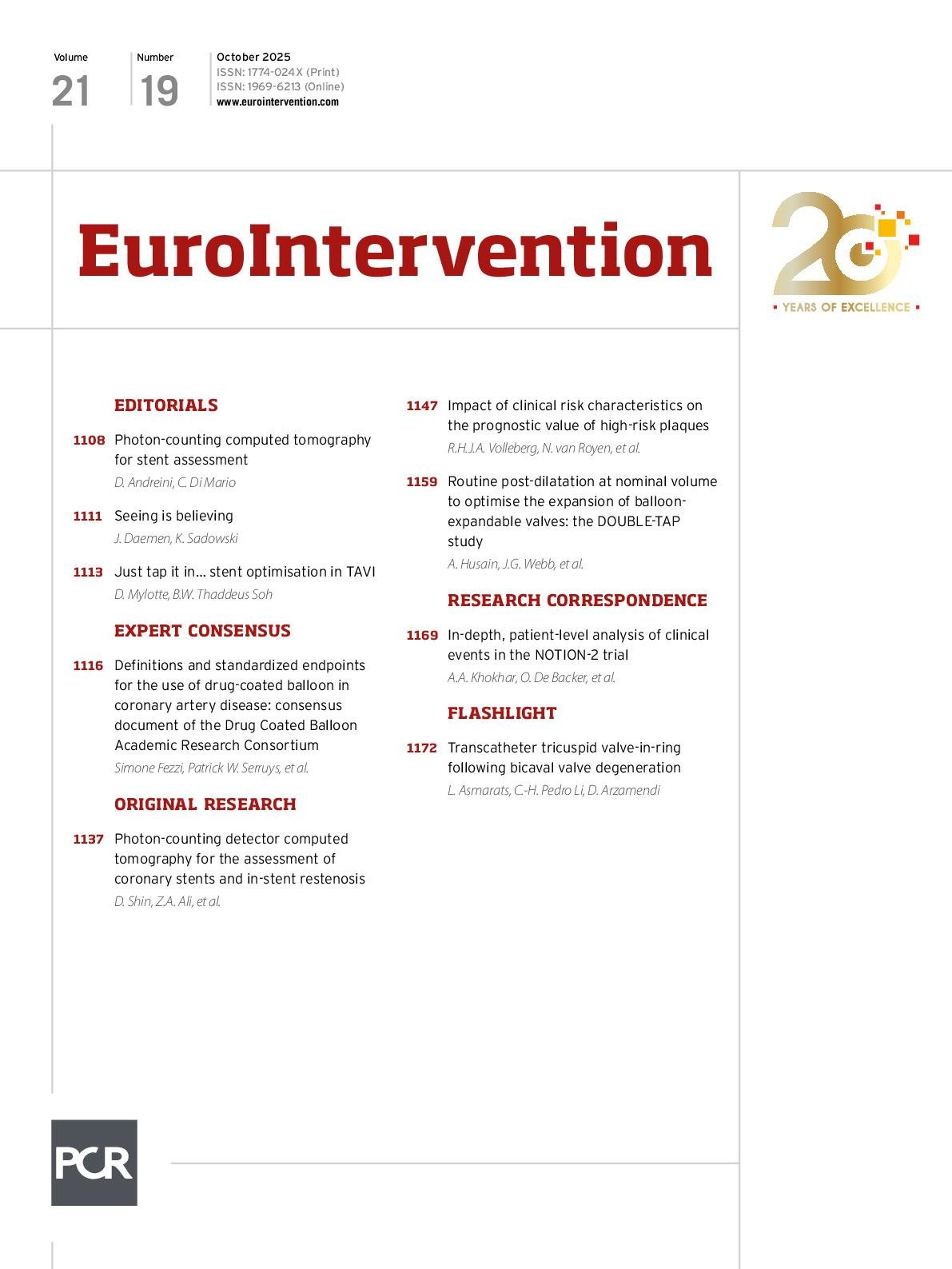In the last decade, a large amount of evidence, including randomised clinical trials, has supported a growing clinical use of coronary computed tomography (CT) angiography (CCTA). Recent guidelines recommended this non-invasive tool as a Class I, first-line test for diagnosing coronary artery disease (CAD)1. In the evaluation of the full spectrum of CAD, however, CCTA is limited by poor image quality and artefacts related to high-density structures, such as calcified plaques and metallic stent struts, which negatively affect interpretability, specificity and diagnostic accuracy of this method compared with invasive coronary angiography (ICA)2. For stent assessment, the limited spatial resolution of conventional scanners rendered 9-10% of stents non-assessable in large CT meta-analyses. A particularly low diagnostic accuracy was found for stents with a nominal diameter <3.0 mm2. Technical developments and the introduction of CT scanners equipped with whole-heart Z-axis coverage and faster gantry rotation times, which enhance temporal resolution, reduced the rate of non-evaluable stents to 5%. However, a significantly lower diagnostic accuracy still affected the evaluation of small stents3. Photon-counting detector CT (PCD-CT) is a novel...
Sign up for free!
Join us for free and access thousands of articles from EuroIntervention, as well as presentations, videos, cases from PCRonline.com

